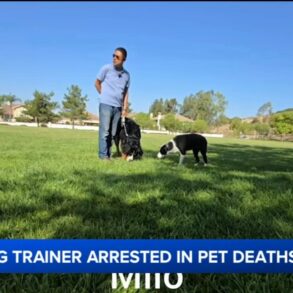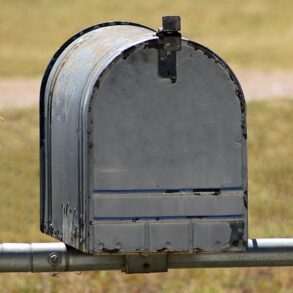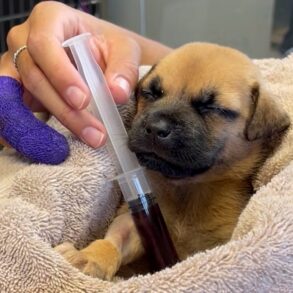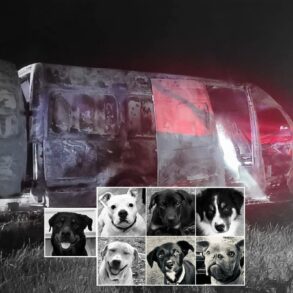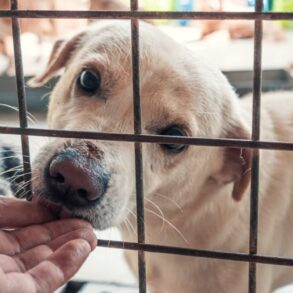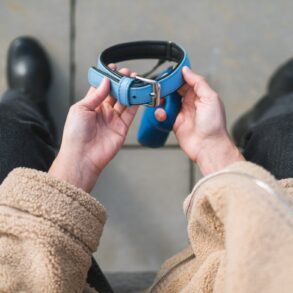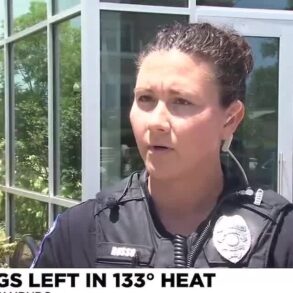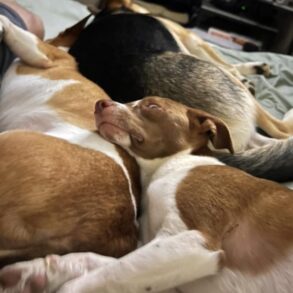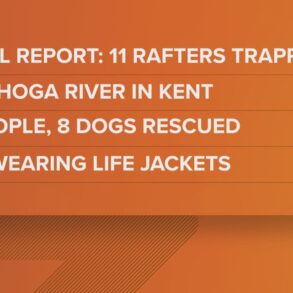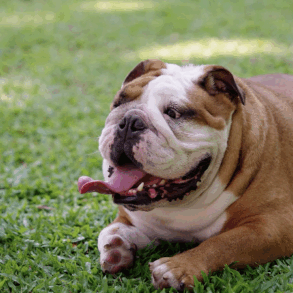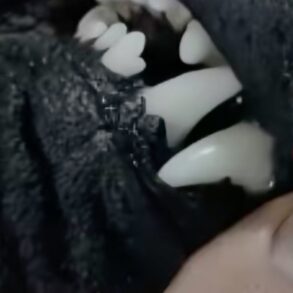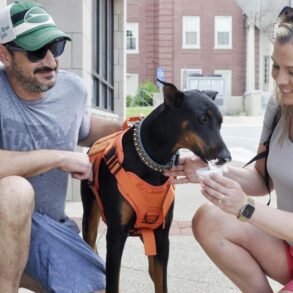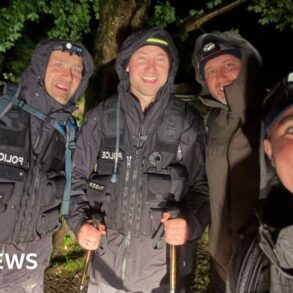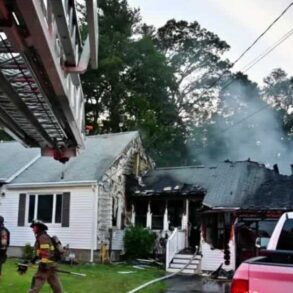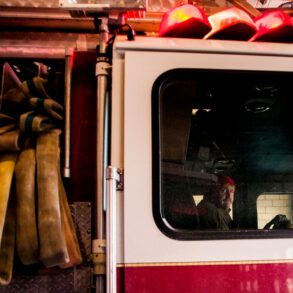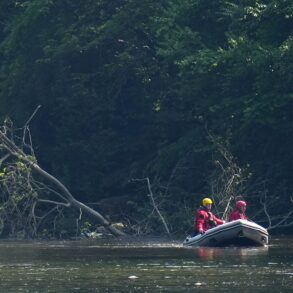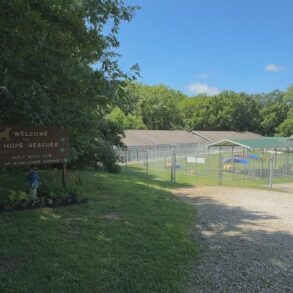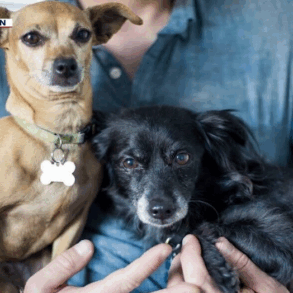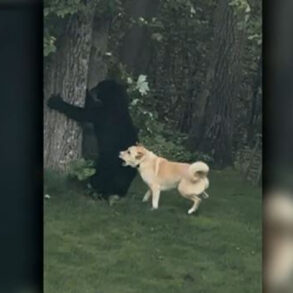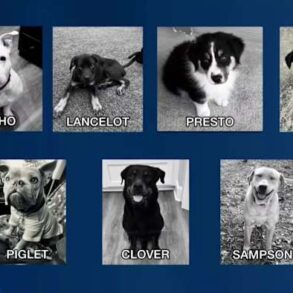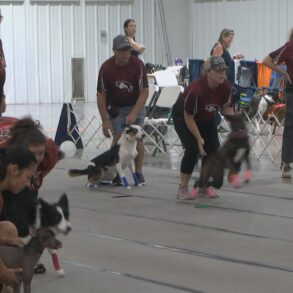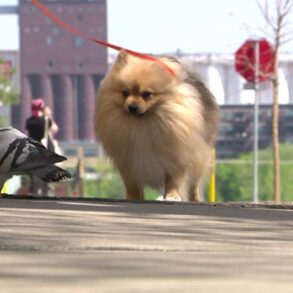Maryland Capitol Police dog Champ led his two-legged shift partner on a 15-foot leash around Lawyers’ Mall in Annapolis as they performed a scheduled bomb check ahead of a holiday open house at the governor’s mansion.
The two are veteran members of the Maryland Capitol Police Explosive Detection K9 Unit, housed under the Department of General Services.
The specially trained sniffer darted from wall to patch of dirt and weaved and wiggled between the bushes as his handler, Capt. Lawrence Barnes, jogged behind him. Barnes watched the dog’s reactions and directed him with subtle hand gestures and commands to “check, check here.”
Energetic and lively for a 10-year-old black Labrador retriever, Champ is trained to lock on to nearly two dozen combinations of explosive materials. The program’s inaugural pooch is one of six working dogs using their superior senses to protect state facilities, workers and visitors from guns and explosives.
Unlike lines of people passing through a metal detector, the canine can maneuver through a queue or quickly and efficiently scan a large outdoor or indoor space.
The K-9 unit aids other law enforcement agencies across the state in sussing out bomb threats and has scanned large universities prior to graduation ceremonies and sporting events. During the 2023 budget year, the unit conducted thousands of scans for explosives and firearms, trained their noses on hundreds of vehicles and dozens of unattended bags and outdoor gatherings. They also scan Ravens and Orioles home games.
No bombs have been detected in the program’s eight years, but Champ helped Annapolis Police find bullet casings after a double shooting. So few positive hits are good news to Barnes.
“I like to think that it’s because of the efforts of our pre-scan rituals and people see us out here and actively working,” he said.
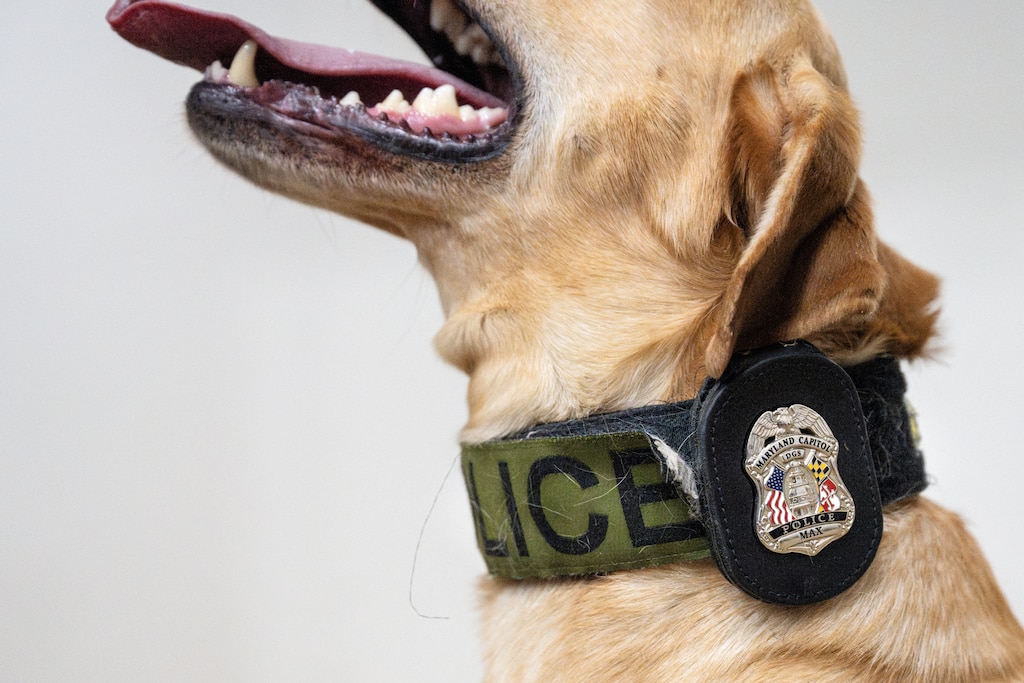
What makes a good K-9?
A police dog’s presence can deter threats, said Tracy A. Campbell, president of the International Police Work Dog Association.
The nonprofit tailors consistent training standards for military and law enforcement agencies around the world and certifies canine teams, including Maryland’s Capitol Police K9 team.
“You just can’t re-create their nose,” Campbell said.
So what kind of pup makes a good police dog? Trainers look for weaned puppies with boundless energy, outgoing personalities and a natural drive to hunt and play. Ones that may be tough to have as pets are, ironically, the ideal candidates.
“Those are the dogs that are always getting into stuff,” said Campbell, a retired law enforcement officer, master trainer and veteran K-9 handler in North Carolina.
Maryland’s sharp-nosed state workers require 18 weeks’ minimum training as pups, then another 14 weeks’ with their handler. The unit performs additional weekly trainings.
The canines’ impressive olfactory skills can come with certain inescapable flaws. Although false positives do happen, if the training is sound they should be rare, Campbell said.
What’s more common is for dogs to smell a trace element that could be used in bomb making in something that’s not a bomb. But that’s where their humans have been trained to help.
Campbell once had a dog alert on a woman’s nitroglycerin heart medication. The dogs train on the scent because dynamite is made with nitroglycerin. Similar accurate-but-not-dangerous alerts can happen when dogs smell certain printer ink cartridges. And for some reason, Campbell said, purple crayons.
Dogs are only canine, after all.
Champ works for his ball
On that brisk December day outside the governor’s mansion, the air was clear of danger. If Champ had found something suspicious, Barnes would have called in the bomb technicians to check it out. But for now Barnes still needed to cleverly reward the trained hunter’s hard work.
The dogs have been taught to associate the scent of explosives with a positive reward. In Champ’s case, this means two things: his beloved plastic yellow ball and play with his favorite human, Barnes.
So, even when the dogs don’t find something, the officer plants decoy substances for Champ.
“They’re like kids,” Barnes said. “If they don’t have success and they’re not having fun, they don’t want to do it.”
Once Champ locked on the planted gunpowder, he calmly sat in front of it. Head lowered, black eyes widened, he sneaked a peek at Barnes to make sure his human was paying attention.
Play time was so close.
Once Barnes released the bright yellow ball to the ground, Champ melted into a puddle of play, writhing and wriggling, a slobbering mouthful of his favorite toy. He was any dog anywhere, lost in joy and relishing in his human’s praise.
Maryland Capitol Police dogs outrank their handlers; Champ is a major to Barnes’ captain.
“He’s in charge,” Barnes said of his superior officer. They work five eight-hour shifts a week, with one hour each day spared for kennel time.
Barnes’ fur-covered colleague lives at home with him, his wife and their children, and is in every way the family dog, even appearing in Christmas card photos.
Barnes said Champ is the best shift partner he’s ever had — “He’s always happy to see you. He’s always ready to work. He loves you. He works for his ball. He keeps me young.”
This post was originally published on this site be sure to check out more of their content.






